How Social Media Marketing Helps Business Growth?
Marketing via social media is getting the attention of various generations, since they are able to easily post their stories on the social networks. Be it a tech review or a child singing along to the latest music or older women making a variety of recipes, social media sites can keep their users on. As more and more users are joining various social media platforms each daily, business are using these platforms to gain new customers. Social media can be a powerful tool to aid companies in establishing their brand as a leader in certain areas of expertise.
But, there's no magical way to make any company appear instantly in social media. The trick is to be consistent and make your mark using imaginative thinking and imagination that is out of the ordinary. This is where you'll need the assistance of a skilled social marketing agency for media. While you might think about managing social media channels on your own using a an agency that handles social media marketing to manage the job has advantages. Keep reading to find out more.

A Brief Insight Into Natural Language Understanding
Natural Language Understanding is an AI that helps humans to interact with computers using natural language. The use of NLU in computers has come a long way, with many systems using these tools to provide better user interface for humans.
Communication with computers and their aided devices has come a long way. From textual command inputs via keyboards and mouse to voice and touch inputs found in the majority of mobile devices and desktops today, the way we interact with the computer has changed drastically. The latest advancements have also paved the way for more exciting avenues in UI, including brain mapping, gesture mapping, augmented reality, etc. And one such advancement is NLU (Natural Language Understanding).
1. What is Natural Language Understanding?

How would it be if we could simply communicate with the computer as we would communicate with a normal person? Natural language understanding aims to achieve that. This artificial intelligence (AI) interprets any kind of text or unstructured data with the help of appropriate computer software. This means NLU can help interpret a text or data to computer language and then translate the output from the computer to a language that humans can understand easily.
While this may sound normal, the difference lies in the way humans get to interact with the computer. For instance, while you would have been forced to use structured sentences to communicate with the computer before, you can interact with computers using natural sentences with the help of NLU.
2. Difference Between Natural Language Understanding and Natural Language Processing

People tend to confuse NLU with Natural language processing (NLP). NLU does belong to a part of NLP and can be considered as a subset of the latter when it comes to the part of understanding and comprehending user language.
The difference lies in the fact that NLU aims to interpret the meaning of sentences communicated by the user rather than sentences themselves. It plays the part of distinguishing between phrasings, vocabularies, mispronunciations, etc. to capture the essence of the sentence. It does this by making use of several processes like sentiment analysis, text categorization, content analysis, etc. to help the computer understand different inputs.
NLP differs from NLU in the fact that it encompasses the entire process of transforming unstructured data into the structured one. It helps users communicate with technology or establish a natural human conversation with the same to answer questions or accomplish tasks.
3. Examples of Natural Language Understanding
Here are a few examples of the applications of Natural Language Understanding in today's world.
Machine Translation - One of the hardest challenges of NLU is the translation of speech or text from one language to different languages. However, several game-changers like Microsoft Translator, Google Translator, Facebook Translation, etc. have made use of NLU's algorithms utilizing AI machine training tools and linguistic rules to create state-of-the-art generic language translation tools.These machine translation tools allow you to simply type any text or upload an entire document to translate them to several languages. Tools like Google Translate take things a step ahead by extracting, reading and translating text from images using OCR (optical character recognition) software.
Automated Reasoning - NLU helps machines adopt automated reasoning tactics to provide logical inferences and conclusions. It allows these machines to provide facts based on deductions via reasoning and logic using "IF-THEN" and similar rules.Take the medical field for example. A computer can be programmed to make use of "IF-THEN" rules to derive conclusions and diagnoses for medical cases based on previous diagnoses inferred for similar cases.
Speech Recognition - Speech recognition is a part of NLP, which makes use of NLU tools to aid computers in understanding natural language speech. It helps humans interact with computers using natural sentences, with the computer using NLU algorithms and tools to decipher the meaning of the sentences and respond accordingly.For example, instead of asking Google Assistant a question like "Weather Today," you can naturally ask the question, "What's the weather outside today?" NLU will split the sentence into different parts and group each part under a different topic like the date (today), topic (weather), etc. It would then proceed to provide the most accurate answer from an online database of "natural language documents" like reference texts, web pages, online news reports, etc.
Language Translation - Language translation is a headache when it comes to understanding the flow of sentences in different languages. It is hard to opt for straight translation of languages from one form to another, as the order of words in a sentence would not be the same for every language, meaning the translation tool would have to restructure the sentence while translating it from one language to another.While translation tools used to overlook this fact, the newer translation tools use NLU to translate languages accurately with a few or no grammatical errors. This can be a boon when it comes to communicating with individuals in different languages. The newer NLU tools also translate inputted text to different languages, altering the structure of the sentence accordingly as well.
How To Improve Your PPC Campaign Performance?

Internet helps to connect people and also provides a vast audience for online advertisements. One of the most effective and popular methods of marketing a product or a business online is through a PPC or Pay Per Click campaign. In this model of advertising, the advertiser pays a fee every time one of their ads is clicked. This method helps bring recognition and audience to the advertiser. Another advantage of a PPC campaign provides is that the advertiser can easily modify it based on the campaign’s performance data. But the hard part involves deciding on the changes need be made to the ad campaign.
If you’re looking to improve your PPC campaign performance, focus on the following factors:
1. Relevant and High Performing Keywords
Keep researching from time to time and add more relevant keywords to the campaign. The keyword should be specific and related to your product or service that you are trying to advertise. Focus on high performing keywords and add keywords similar or related to it. Underperforming keywords should be removed, as they not only cost you more but also affect your campaign and quality score negatively.
2. Adding Negative Keywords
Add words, which are similar but unrelated to your product, to the negative keyword category. For example, if your ad is about a baseball bat, add animal or mammals into the negative keyword list so that your ads are not displayed when someone searches for anything related to ‘bats’ of the animal kingdom. This would increase your click-through rate, as ads would be displayed to the right audience. Keep in mind that irrelevant or broad keywords hurt your campaign and need to be avoided through this method.
3. Ad Extension

Ad extensions that allow customers to see additional info about the advertised product can help improve the click-through rate. Such Ad extensions allow advertisers to write more ad copy to describe the advertised product and attract more viewers. Having these extensions is vital for the ad campaign’s performance, as they are common these days and not having them would look unprofessional when compared to other PPC ads out there.
4. The Landing Page

The page that the user shall reach after clicking the ad should be appealing, and its content needs to be closer to what the advertisement had promised. The content should also be modified to align it with high performing keywords and popular search entries. This enhances the probability of the viewer buying the product and bringing a higher return on investment. The landing page should have a user-friendly interface and should also be optimized to open easily on a mobile phone and desktop.
5. Optimizing and improving the Ad Text
Catchy and convincing ad text is crucial in advertising campaigns. If a campaign is not running well, modifications in this area can be a game-changer. Extensive research and brainstorming to come up with more relatable and compelling ad text would bring positive results. Another thing to keep in my mind is to check that your ads are properly optimized for mobile users, as they constitute a large part of the target audience. The mobile users should be able to see the entire ad text with clarity; otherwise, the click-through rate might remain low.
6. Changes to Bidding
You must understand the whole concept and process of bidding so that you can decide when and how to increase your bidding. If your bids are lower than your competitors, you should probably increase the bid to get a better click through rate. Another option is to opt for manual bidding, as it provides more control and increases the chances of making your PPC ad campaign successful.
One final take away is that one should monitor and analyze the PPC ad campaign data regularly. It would help you identify the shortcomings of your campaign strategy and help decide when and how to act on the suggestions mentioned above. With a bit of patience, research and creative thinking, you can enhance the performance of your PPC campaign.
Article Resource:-https://www.eligocs.com/ppc/how-to-improve-your-ppc-campaign-performance/
What Is SaaS Based Applications And How It Can Help Businesses?

Many businesses are turning towards SaaS based applications in recent years. Using the benefits offered by these applications, businesses are channeling their growth and marketing strategies around them to boost productivity in the long run.
1. An Introduction to SaaS
SaaS is a software delivery method, which allows any device having a web browser and internet connection to access data from anywhere. The method follows a web-based model wherein the data is provided by the third party software vendors who are responsible for building and maintaining databases, servers and the code for applications.
A few common examples of SaaS-based applications, which we use daily, include Google Apps, Salesforce, Concur, Dropbox, Cisco WebEx, GoToMeeting, etc.
2. Pros of SaaS
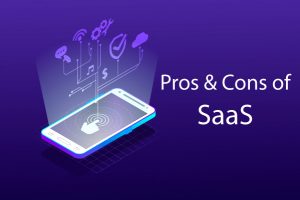
SaaS has many pros, including:
- Accessibility: SaaS cloud services help users to gain access to data from any place in the world at any time. All users would require for the same purpose are a device that can connect to the internet, stable internet connection and valid user authentication.
- Scalability: SaaS services allow companies to subscribe more services during the peak time and then get back to the same subscriptions during intermittent slack periods, thereby allowing the former to cut costs related to managing these services.
- Security: With SaaS, the installation of new services throughout the organization becomes easier. All one needs to do is install the new software and connect it to the central system where it has been installed and deploy it from there.
- Cost-Effective Maintenance: The cost of building and maintaining new software is managed by third-party software vendors, thus reducing the load on businesses.
- Reduced Capital: With third party vendors taking care of software expenses, companies can invest more money in operating and marketing costs rather than capital costs.
3. Cons of SaaS
SaaS services come with their share of cons as well, which include:
- Security: As the usage of data moves to cloud databases, the question of keeping sensitive data secure arises.
- Control: SaaS services allow businesses to have limited or no control over software services they use. This limits options like customization of software services as well.
- Connectivity: SaaS services are effective only with a stable internet connection. Outages can cause disruptions in important works, thereby reducing productivity.
- SLA (Service Level Agreement): SLAs differ from provider to provider, making it difficult for companies to keep abreast of new conditions and regulations when moving their data from one SaaS cloud to another.
4. How SaaS can help Businesses
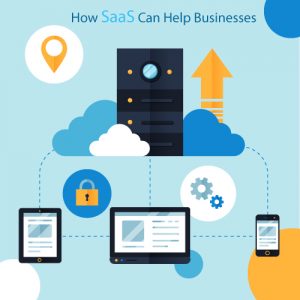
- SaaS Services reduce Application Costs: SaaS reduces costs related to IT infrastructure, thereby reducing application costs for companies and allowing them to invest the same money in other areas. SaaS services are subscription-based and require minimal investment. The costs related to the services can also be managed appropriately by removing or adding services as and when required.
- SaaS can increase Productivity by providing the latest Business Solutions and Features: SaaS services allow businesses to gain access to the latest business applications and upgrades without significant investments. The businesses can also access these applications and services within moments of them being released, as well as enjoy automatic updates and bug fixes to improve productivity significantly.
- SaaS provides flexible Business Solutions for Businesses and users: SaaS services allow businesses to be more flexible with their models, strategies and business models. They provide a seamless model to add new users and business solutions, as well as customize existing solutions, with minimal hassles. Designed with the capability to integrate multiple users at the same time, SaaS applications provide scalable solutions for businesses, as well as users. SaaS applications are easy to understand and operate as well, making them practical for businesses and users. The customization of these applications also makes it easy for the concerned departments to use SaaS data, modules and reports without confusion.
- SaaS allows seamless collaboration: One of the best ways SaaS can help businesses is by allowing many users to work collaboratively on the same application or service without any hindrances. A centralized location allows users to make changes to modules and documents from anywhere while storing data intelligently to avoid data loss.
Article Resource:-https://www.eligocs.com/saas/what-is-saas-based-applications-and-how-it-can-help-businesses/
What Is Edge Computing And Why It Matters?

Thanks to the increased usage of IoT (Internet-Connected) devices and the advent of newer applications that need data to work on a real-time basis, edge computing is fast gaining a foothold in the world of IT. But what exactly is edge computing and why does it matter so much in today’s app-driven world. Let’s take a look.
What is Edge Computing?
Edge computing is a term used to denote data computation done near the latter’s source instead of at a centralized cloud or data centre. In other words, services like data storage and computation (basic tasks) are brought closer to the data source rather than being located at a data centre thousands of miles away.
The purpose of edge computing is to reduce the myriad issues that arise from sending and receiving data across a long distance, including latency, one of the main issues. Edge computing can also reduce costs related to data processing by having it done locally than transferring it to a distant cloud or data centre.
The Myriad Benefits of Edge Computing
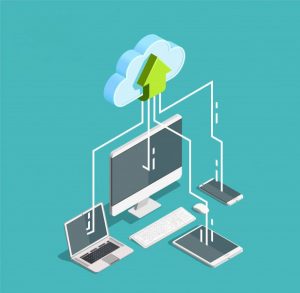
Why does Edge computing matter in today’s technology-driven world? Here are some of the benefits offered by edge computing for individuals and companies.
- Reduced overhead Costs for Companies:Edge computing can drastically reduce the costs related to data processing for companies handling large amounts of data. For instance, a company investing in an edge-computing architecture would find the costs related to the same significantly lower than the bandwidth costs paid for transferring data to and from a centralized cloud location.
- Increased Data Storage and Processing Speed:One of the main benefits of edge computing is that it allows the faster processing of data, thus reducing latency issues frequently experienced by real-time applications. Edge computing services provide local sources for data storage and processing. These services act as gateways, which can process data received from edge devices, thus sending only relevant data to the cloud and back. This, in turn, can reduce bandwidth needs considerably, which can be beneficial for applications requiring data responses on a real-time basis.
Let’s take an example of a facial recognition system for a smartphone. In traditional cases, a smartphone that scans the person’s face would send the data to a cloud, which would process the data and send the results back. This would take a long time. However, with edge computing, this issue is taken care of by placing an edge server, which would process this information locally and send the results back within a short span.
3. Reduced delays in Data Transfer
The same can be said for real-time applications like self-driving cars, AI, augmented reality, automation systems, smart cities, and so on where latency in data processing can lead to serious issues. By providing more processing control to the network edges, the delays can be reduced significantly, thus improving the productivity of these applications immensely. In addition to this, edge computing would provide newer functionality to real-time processes that would otherwise not be able to enjoy 100% productivity.
The Future of Edge Computing
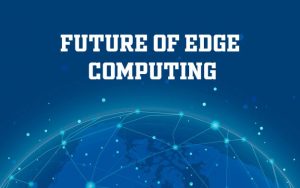
Edge computing is slated to become more advanced in the coming days. With an increase in the number of applications that require advanced computing and storage services, edge computing would lead to the rise of more edge servers and data centers to process local information.
The emphasis would be placed on addressing the issues common with edge computing. Challenges related to data consolidation across multiple data realms will be monitored, with more and more ecosystems choosing to feed off data from edge servers directly rather than a centralized cloud.
Edge computing will also give rise to more advanced ML and AI services, as well as more sophisticated use cases. This, in turn, would make data management across these services and the data processing centers more challenging. And addressing these challenges will be one of the major concerns of companies planning to utilize the feature.
Edge computing would also have an increased focus on improving the security of data centers that process data locally. The rise of new technologies for data storage and processing would also give rise to newer threats to the security of data processed in these edge centers. As such, companies offering edge computing services would need to pay extra attention to ensuring that the data stored and processed in their centers are secure, while the services they offer through these centers must be robust and secure with minimal chance for errors.
Article Resource:-What is Edge Computing and Why it Matters?
How Development Companies Choose The Right Stack When It Comes To MEAN Stack Vs. MERN Stack?

A technology stack is a development process comprising of all the languages and frameworks that go into developing, running and maintaining an application. Two of the most sought-after tech stacks today are the MEAN Stack and the MERN Stack. Let’s take some time to understand these technology stacks and find out which one is more preferable for programmers and companies.
Standard features present in both MEAN Stack and MERN Stack
Both MEAN and MERN stacks have similar components including:
M – for MongoDB: Database that stores and retrieves data
E – for ExpressjS: Manages client requests and handles necessary routing and production of APIs
A:AngularJS is a JavaScript framework developed by Google. It provides some awesome features like the two-way data binding.
N –for NodeJS: Manages the creation of backend application on the server-side utilizing Javascript
Basic Comparison between MEAN and MERN Technology Stacks
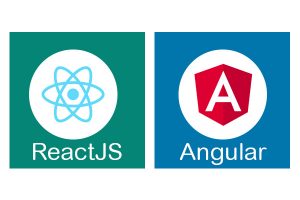
Angular JS: Used in the MEAN stack, Angular JS has well-defined system architecture, thanks to its MVC framework. This allows the code to be well-organized and therefore, easier to maintain.
However, programmers may find it hard to handle the change events related to large volumes of data owing to its two-way binding model.
ReactJS: on the other hand, is a library, which allows programmers to create dynamic UIs. It features an extensive library of functions and tools utilized to build, as well as render UI components. While organizing data may be a problem because it is just a library, ReactJS allows programmers to handle large volumes of dynamic data on a real-time basis with very few hassles.
Architecture:
MEAN: MEAN features an MVC or MVW architecture that allows programmers to organize codes better. An intermediate layer also helps to separate the UI code from the database, thus making it easier for developers to manage and upgrade existing code.
MERN: Although it facilitates smooth rendering, MERN hands over the responsibility of organizing the code to the developer, which may cause hassles for some developers.
Result: MEAN is a better tech stack when it comes to handling large applications on an enterprise level.
Performance
MEAN: Angular JS provides an excellent MVC framework to organize codes and files.
MERN: React JS helps quicken the coding process owing to its extensive library of Javascript tools to aid developers.
Result: MERN is better in performance.
Productivity:
MEAN: Angular JS comes with a Command Line Interface (CLI) option, which makes it easier for developers to upgrade code. When combined with the stack’s MVC framework, this boosts productivity to a great extent.
MERN: While React offers a library for UI building and rendering, it needs the support ofadditional third-party libraries for a fully streamed development process. This makes the MERN stack less productive comparatively.
Result: MEAN is more productive when compared to MERN.
Support for Third-Party Libraries
MEAN: When developing large applications, it is customary for developers to make use of third party libraries. Since Angular JS features an MVC framework, which supports third-party libraries, it becomes easier for developers to use these libraries without any additional configurations or features.
MERN: React JS comes with its library of Javascript tools for app development. However, it does not support additional requests and would need to rely on additional libraries, features and configurations for the same purpose.
Result: The MEAN tech stack’s extended support for third-party libraries makes it a better choice for large applications.
Flow of Data
MEAN: Angular JS supports the bidirectional flow of data. Any change in the UI results in an immediate and automatic change to the model state. This makes the MEAN stack more favourable for small projects.
ReactJS: on the other hand, is a library, which allows programmers to create dynamic UIs. It features an extensive library of functions and tools utilized to build, as well as render UI components. While organizing data may be a problem because it is just a library, ReactJS allows programmers to handle large volumes of dynamic data on a real-time basis with very few hassles.
MEAN or MERN: Which is better?
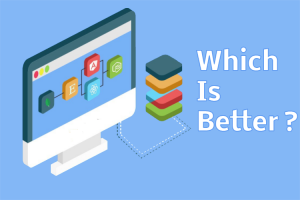
Architecture:
MEAN: MEAN features an MVC or MVW architecture that allows programmers to organize codes better. An intermediate layer also helps to separate the UI code from the database, thus making it easier for developers to manage and upgrade existing code.
MERN: Although it facilitates smooth rendering, MERN hands over the responsibility of organizing the code to the developer, which may cause hassles for some developers.
Result: MEAN is a better tech stack when it comes to handling large applications on an enterprise level.
Performance
MEAN: Angular JS provides an excellent MVC framework to organize codes and files.
MEAN: Angular JS supports the bidirectional flow of data. Any change in the UI results in an immediate and automatic change to the model state. This makes the MEAN stack more favourable for small projects.
MERN: React JS supports the unidirectional flow of data. This means changes to the UI can be made only after making the necessary changes to the model state. This provides a better overview of the flow of data when handling large projects.
Result: MERN stack is considered better when it comes to maintaining the organizational flow of data in large projects.
Support:
MEAN: While both tech stacks provide documentation, the learning curve for Angular JS is comparatively steeper owing to its myriad templates and Typescrips, which need mastering.
MERN: MEAN does not require a learning process and can be easily mastered by developers. It also offers excellent documentation when compared to Angular JS, which makes it easier for developers to master the MERN tech stack easily and quickly.
Result:MERN is better than MEAN when it comes to ease of learning and support for the same
What do Companies Prefer?
Fast and hassle-free web application development from scratch without any gaps or discontinuation in business.
Extensive sharing capabilities, which allow code sharing and reusing over a large platform, thereby reducing overall cost related to building and upgrading code.
Enhanced scalability of MVC architecture framework, which allows developers to build highly scalable applications with ease.
Higher development speed achieved with the help of the myriad libraries, templates and modules available within the stack’s framework.
Article Resource:-
An Introduction To MEAN Stack

MEAN stack is a programming process that is built on the framework of four essential components, MongoDB, Express JS, Angular JS and Node JS. It offers many benefits to programmers and currently is one of the most sought-after processes for many web developers or companies that hire them.
1. Technology Stack
Aka a solutions stack, a technology stack or technology infrastructure is a list that consists of the technology services that are utilized to build, as well as run, an application. A technology stack provides a quick summarization of the frameworks, programming languages and tools used to develop and manage an application.
2. Benefits of a Technology Stack
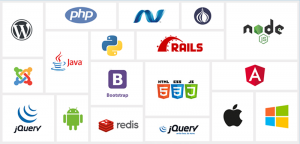
One of the main benefits of a technology stack is that it provides a clear description of all the information needed to understand the way the application is built. As such, the technology stack indicates the strengths and weaknesses of the application. Tech stacks are also used by many companies to hire developers, as they help them narrow down the list of prospective employees to those who are familiar with the tech stack.
3. Introduction to a MEAN Stack
MEAN Stack pertains to the software development process, which includes particular technologies like MongoDB, ExpressJs, AngularJs and NodeJs. A mean stack developer is one who has programming knowledge in these areas and is primarily a good Javascript developer. The technologies involved in the MEAN stack are used to make full-stack applications.
4. Components of MEAN Stack
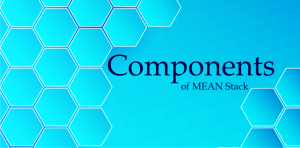
The components of MEAN Stack include:
- MongoDB: Every technology stack needs a database. And MongoDB does that for the MEAN Stack. The NoSQL database is written in a combination of languages, including Python, C++, Go and Javascript, and treats documents as objects. The open-source software can handle the large quantity of unstructured data across multiple platforms.
- ExpressJS: This component of the MEAN stack acts as the backend tool for the stack. Used for creating application program interfaces (APIs) and web development tools over a licensed open-source platform. With the ability to host node.js projects, it works on applications that connect to a server via a connection request generated by the client.
- AngularJS: It makes up the frontend component of the MEAN stack. Overcoming the issues arising from single-page applications, this open-source tool makes use of HTML as a template language to create web, as well as mobile, applications with AngularJS.
- NodeJS: This web development tool works with MongoDB to make up the backend framework of the MEAN stack. A platform-independent tool that is preferred for real-time applications, NodeJS uses a JS runtime environment to developer network and server-side applications.
In short, the main functions of the individual components of the MEAN stack can be summarized as follows.
- MongoDB: Database used to retrieve and store data
- ExpressJS: Used to send requests to the database via client and wait for a response
- AngularJS: Used to accept the requests and display the results to clients
- NodeJS: Used to handle both server-side and client-side requests.
5. Benefits of MEAN Technology Stack
A MEAN technology stack has several benefits over standard programming tools. These include:
- Easy to learn stack, as the server and client-side programs are written in one language, Javascript
- Ease of transfer of code from one framework to another
- Enhanced user interface owing to support for Model View Controller (MVC) architecture
- Enhanced platform flexibility and cloud cluster support, which makes code creation, updating, replicating and testing hassle-free
- Increased cost-effectiveness owing to a fewer number of developers for an application
- Enhanced cloud compatibility, which further reduces costs related to development, cloud integration and disk space storage
- Increased speed and reusability owing to the framework’s non-blocking architecture, which, in turn, makes reusability, testability and maintenance easy
- Easy traceability and debugging ability owing to the single-source language used across multiple layers of code
- Easy availability of an extensive library of JS modules to make web development with the Javascript very easy
6. Prerequisites for MEAN Stack
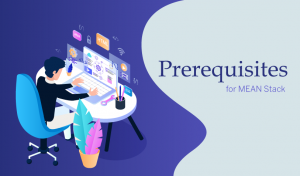
A MEAN stack developer is a person who is required to know extensively about programming in Javascript. The developer would be required to build code for frontend applications and backend systems. The responsibilities would also include the creation of code for new modules and features, as well as code for creating unit test cases, all the while coordinating with other web app teams for API integrations.
Some of the prerequisites for MEAN Stack developers include:
- Knowledge of web and application development workflow and architecture
- Knowledge of programming languages like HTML, CSS and Javascript
- Knowledge of frameworks related to CSS and Javascript
- Knowledge of components used in MEAN stack, including MongoDB, ExpressJS, Angular JS (can be substituted by VueJS or React JS) and Node JS
- Knowledge of client and server-side requirements and processes
- Knowledge of a design framework like Motion UI (optional)
- Knowledge (or at least familiarity) of NPM package manager
Article Resource:-
https://www.eligocs.com/mean-stack/an-introduction-to-mean-stack/